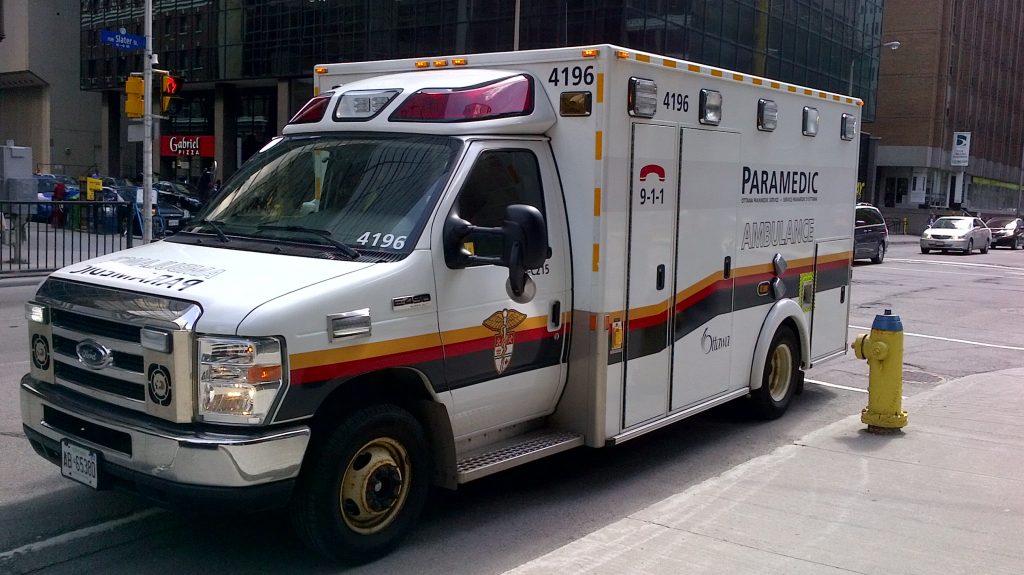
(The Salvation Army Grace Manor is one of the many long-term care homes in the Champlain network —the health network that Ottawa falls under— that wants to see Premier Doug Ford give them additional funds.)
Despite the steady increase in long-term home care funding over the last four years in Ottawa, some advocates are afraid that the increases won’t keep up with the increasing demands for health networks as the 2019 Ontario Budget approaches.
Ottawa falls under the Champlain network.
There has been a five percent increase in operating expenses for Champlain long-term care homes from 2014 to 2018, according to calculations done with provincial public spending records.
In 2014-15, the operating expense for Champlain was $345,598,800 and rose to $363,641,729 according to that same data.
(The graph shows a year-to-year increase in expenses for Champlain long-term homes. Although funds increase each year, it still isn’t increasing as much as some people hope. – Data taken from 2014-18 Public Accounts of Ontario.)
Two weeks ago, the Ontario NDP released a leaked draft of the Conservative’s health care privatization bill, where the Ford Government plans to restructure the province’s health care network into one “Super Agency” in order to save money.
This change comes one year after the Ontario Liberals spent almost $1 billion above what they expected to for the health sector, according to the 2017-18 spending records.
Ontario Health Minister Christine Elliott brushed off the leak by stating it was only an early draft, according to media reports.
Elliott was contacted for an interview specifically about long-term care but did not reply.
While Teresa Armstrong, the Opposition Critic for Home and Long-Term Care, declined an interview, they did issue a statement via email.
Armstrong’s office stated that “the Ford Government is making Ontario’s bad health care situation worse.”
The major concern that Armstrong voiced in the email is that this change would make people in rural and remote areas have a tougher time finding access to health care because combined bureaucracies means combining patient lists.
This will include long-term care homes.
Fourteen Local Health Integration Networks (LHINs) are described as being “crown agencies established by the Government of Ontario to plan, coordinate, integrate and fund health services at a local,” according to the Central West LHIN website.
If Armstrong is right when she says this “super agency” will make it harder for people to get into long-term care homes of their choosing, it would create an issue among advocates.
Jeff Querel is the director of finance at the Salvation Army Grace Manor, a long-term care home on Wellington Street West. He said that more government help is needed to operate the facility.
“I don’t think you’d find anyone who says that it [additional funding] is not needed,” Querel said. “Our expenses tend to be more than the funding they give us most years.”
Querel has been the director of finance at the Salvation Army Grace Manor for almost 17 years.
“Even if the funding goes up by a little bit every year, we still need more,” he added.
Querel said that he didn’t expect any cuts from the 2019 budget because a lot of people would be angry, however, he added that he wouldn’t be happy if any amount was chopped.
“I’m not worrying about it happening – only if it happens.”
While there is a shared sentiment that general funding for long-term care homes is needed in Ontario, there are more specific issues that some would like to see addressed.
“I think more funding is needed, but also more availability for long-term spots is needed,” said Katherine Arnup, a retired Carleton University associate professor who specializes in caring for elderly parents.
Premier Doug Ford tweeted that he plans to add 30,000 long-term beds across Ontario in April 2018, but that remains to be seen.
Arnup added, “I think there is another issue with long-term care homes when it comes to how seniors are treated. They need somewhere to go.”





